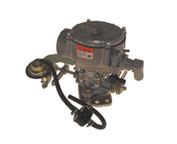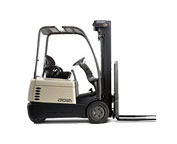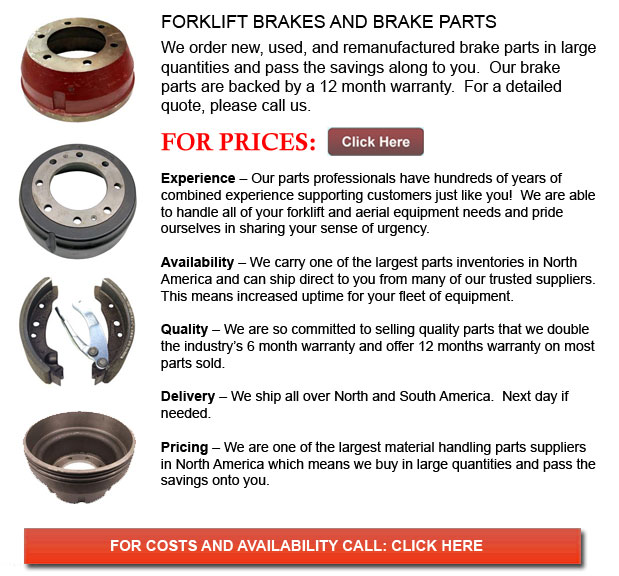
Forklift Brakes - A brake where the friction is provided by a set of brake pads or brake shoes which press against a rotating drum unit referred to as a brake drum. There are several specific differences among brake drum kinds. A "brake drum" is commonly the definition provided whenever shoes press on the interior surface of the drum. A "clasp brake" is the term used to describe if shoes press against the exterior of the drum. Another kind of brake, referred to as a "band brake" utilizes a flexible belt or band to wrap around the outside of the drum. Where the drum is pinched in between two shoes, it can be known as a "pinch brake drum." Like a conventional disc brake, these kinds of brakes are rather rare.
Old brake drums, before nineteen ninety five, required to be consistently modified so as to compensate for wear of the shoe and drum. "Low pedal" can cause the required modifications are not performed satisfactorily. The vehicle could become dangerous and the brakes could become ineffective if low pedal is mixed together with brake fade.
There are different Self Adjusting Brake Systems offered, and they could be categorized within two main kinds, RAD and RAI. RAI systems have built-in tools that prevent the systems to recover if the brake is overheating. The most well known RAI manufacturers are AP, Bendix, Lucas, and Bosch. The most famous RAD systems consist of Volkswagen, VAG, AP, Bendix and Ford recovery systems.
The self adjusting brake will usually just engage when the forklift is reversing into a stop. This method of stopping is suitable for use whereby all wheels utilize brake drums. Disc brakes are utilized on the front wheels of vehicles nowadays. By functioning only in reverse it is less possible that the brakes would be applied while hot and the brake drums are expanded. If tweaked while hot, "dragging brakes" could happen, which raises fuel consumption and accelerates wear. A ratchet tool that becomes engaged as the hand brake is set is another way the self adjusting brakes can work. This means is only appropriate in applications where rear brake drums are utilized. When the emergency or parking brake actuator lever goes beyond a specific amount of travel, the ratchet improvements an adjuster screw and the brake shoes move toward the drum.
There is a manual adjustment knob located at the bottom of the drum. It is generally adjusted through a hole on the opposite side of the wheel and this involves going beneath the vehicle using a flathead screwdriver. It is of utmost importance to move the click wheel properly and adjust each wheel equally. If uneven adjustment takes place, the vehicle could pull to one side during heavy braking. The most efficient method so as to guarantee this tiresome job is accomplished carefully is to either lift each and every wheel off the ground and hand spin it while measuring how much force it takes and feeling if the shoes are dragging, or give each one the same amount of manual clicks and then do a road test.
![]() Click to Download the pdf
Click to Download the pdf
Forklift Parts








Lift Parts Express
TOLL FREE: 1-888-695-7994
San Angelo, Texas
forkliftpartssanangelo.com
Email Us
About Us



